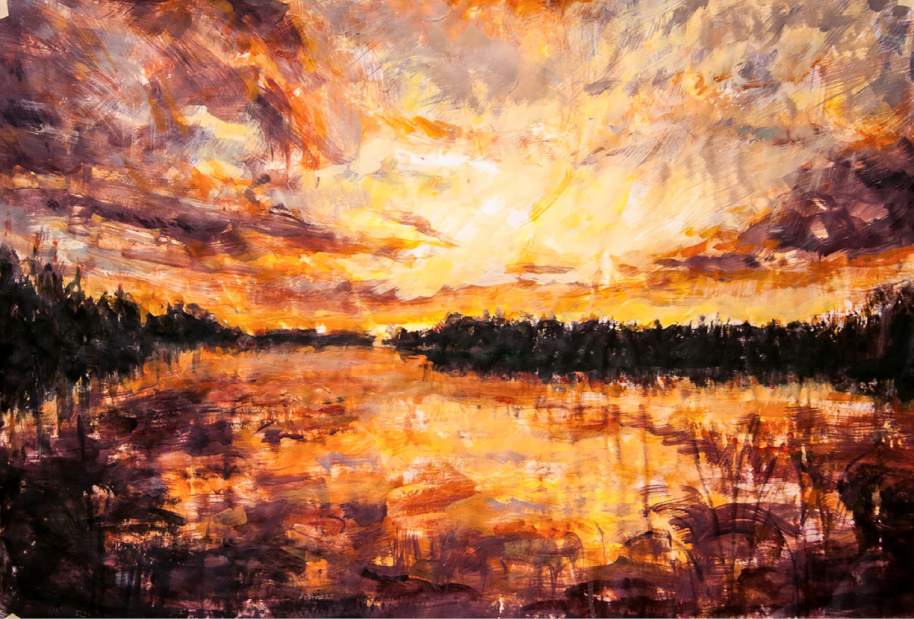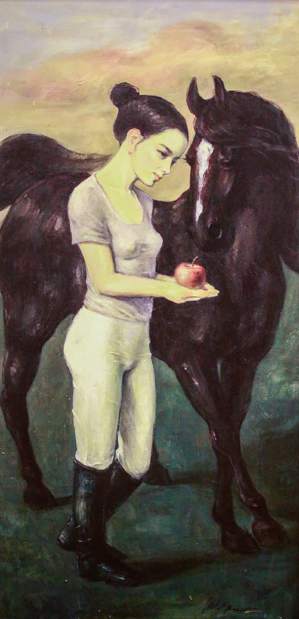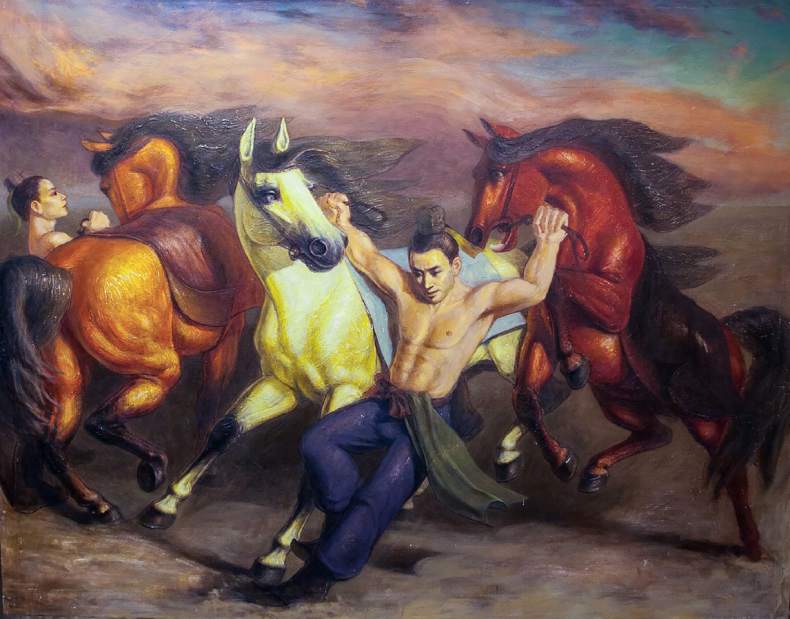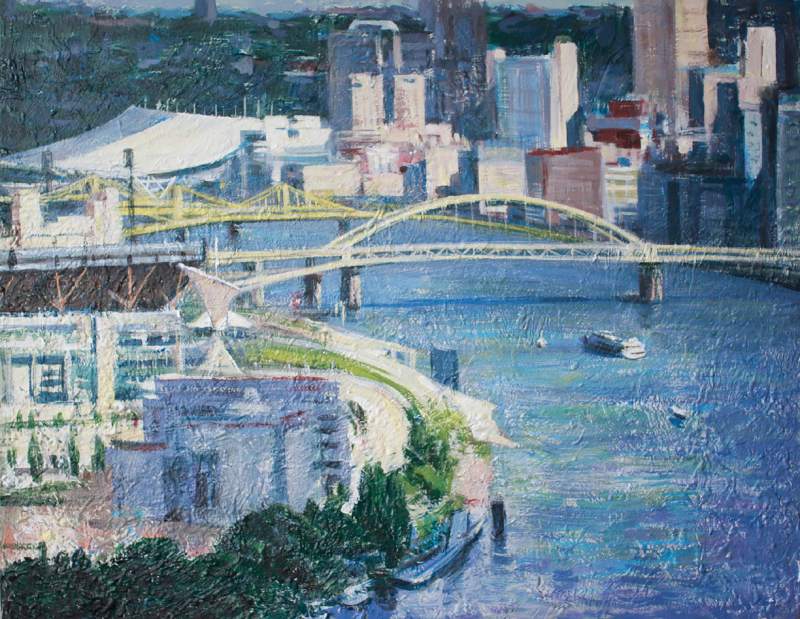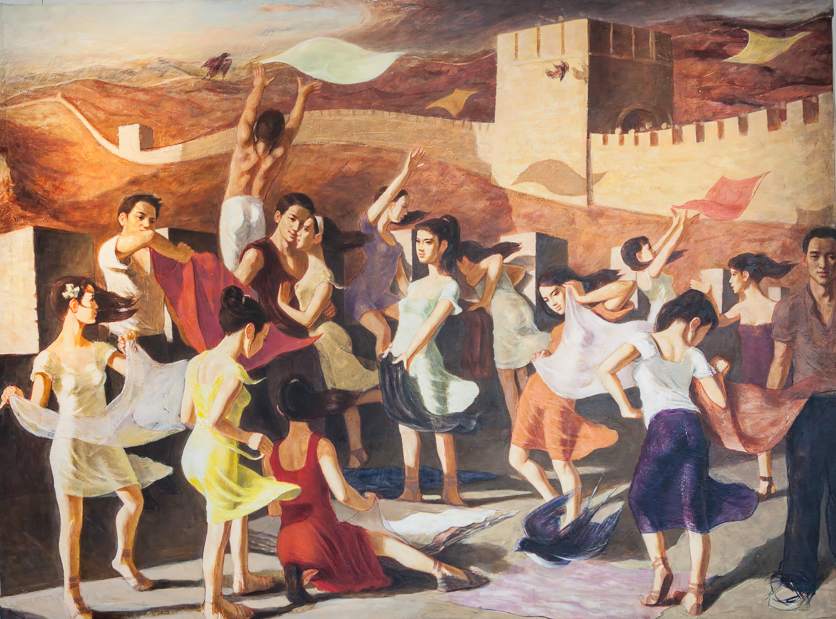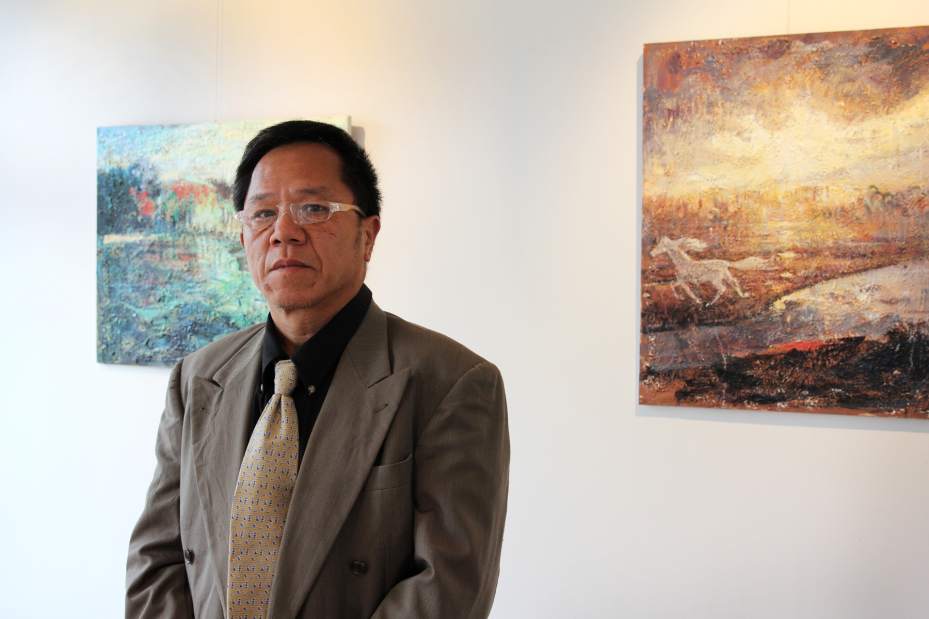Art Review: Wen Gao finds inspiration in life forces
“The New Art of Wen Gao,” on display at International Images Ltd. in Sewickley, is an exhibit worth seeking out, especially if one is interested in art from a decidedly Eastern point of view.
Chinese artist Wen Gao, 56, moved to the Pittsburgh area in 1996 after testing the waters with his art, painting portraits at Christmas time at Ross Park Mall. He has since settled in Ross, where he keeps a studio in his home and teaches art classes.
But all along, this accomplished artist has been working on his own paintings in his inimitable style, which is the result of a mutual mix of realistic and impressionistic techniques. And the 31 works represented in the exhibit, Gao's latest output to date, show that life itself is a vibrant and ever-giving font of inspiration.
“That life force is all around us,” Gao says through his interpreter, Jenny Warburton, who also happens to be one of his students.
For Gao, everything has life, whether it is inherent life or given life — even objects, whether you can sense a life force in them or not.
Among the many paintings on display, visitors will likely notice there are a lot of horses depicted. A favorite subject for this artist, Gao says, “The horse represents special life.”
Perhaps no painting sums this up better than “Return From the Ride,” which is based on a real person, a young lady Gao was commissioned to paint a few years ago by a Philadelphia family. Gao painted the young equestrienne presenting an apple as “a gift” to her horse.
“The interaction of the horse and rider is a life force in itself,” Gao says. “There is a very strong bond between the rider and the horse. The two of them make the trip, both are givers and receivers.”
Not far from that picture hangs “Three Horses,” which is Gao's magnum opus. Featuring three horses being trained by two riders, its subjects are placed squarely in the Tang Dynasty (618-907 A.D.), when China was at the apex of world culture.
“At that time, China was very strong,” Gao says. “There was no war, people were very wealthy and society was peaceful. People enjoyed their lives.”
To symbolize this, Gao painted the horses fat, robust and full of energy.
“Usually, the horses were trained for military purposes, to be sent into battle, but at that time, the horses were well-fed and leisurely trained because it was peacetime,” Gao says
The yellow horse, or, as he calls it, “the new horse,” in the middle of the picture symbolizes the next generation. “The new horse means the next generation is better than the previous one,” he says.
Pointing to another large work, “Celebration,” Gao says that it, too, represents a new generation, but in a contemporary context. In this work, that generation is represented in a group of young people placed in front of the Great Wall of China, which symbolizes the history of the isolation of China from the rest of the world.
“They represent the future of China,” Gao says of the happy young people throwing silk scarves up and over the wall. The scarves, too, are a symbol of the country that was the first to cultivate silkworms for silk production.
“They are celebrating China's new freedom,” Gao says. “They are releasing silk scarves over and across the wall, symbolizing a celebration of a new freedom that goes beyond what used to bind China.”
Above and through the crown, magpies fly in a circular pattern. A compositional element, Gao is quick to point out, but also not without meaning. “The magpie in China is an auspicious bird,” he says. “It carries good news.”
Several paintings of local interest, such as “Northshore,” which features a Pittsburgh vista that includes the Carnegie Science Center, Heinz Field, PNC Park and the David L. Lawrence Convention Center all in one swoop, and “The Gazebo,” which features Sewickley's own Gazebo at the center of town, round out the exhibit.
Finally, the piece “Magnificence” represents a new direction for Gao.
“This is meant to be my true art. In the future, my style will look more like this,” Gao says of the painting on thick paper of a sunset over a lake in splashes of burnt umber and orange.
Gao says he painted it in one sitting, with the intent of representing life as he sees it.
Kurt Shaw is the art critic for Trib Total Media. He can be reached at kshaw@tribweb.com.

